5 Strength-Training Exercises for Sculpting a Triathlete's Physique
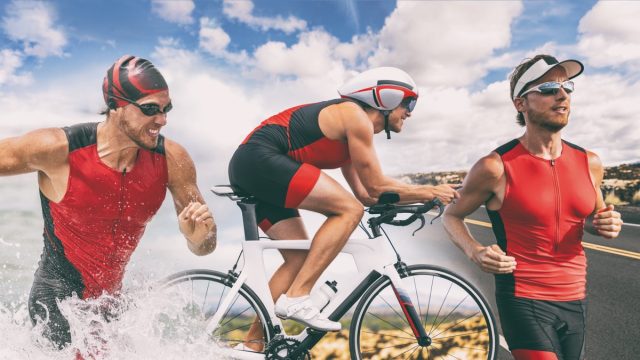
Whether you are a triathlete, runner, cyclist, surfer, mom, or dad, strength training is critical to overall health and a triathlete's training regimen. I would know. I received my education in a Master's Degree in Science with an emphasis in Exercise Science from the University of Texas in San Antonio. Before receiving my Master's Degree, I participated in 4 Ironman Triathlons, a 2.4-mile swim, a 112-mile bike, and a 26.2-mile run, but I wanted to learn more about the "why" and the "how" through knowledge. While getting my Master's Degree, I coached CrossFit but where it gets good is learning about my knowledge of strength during my Ironman Triathlon training and beyond, as so many triathletes will push the strength training aside. My goal with my triathletes and runners is to keep the muscle on as long as possible before heading into the heavy specific training for a race.
Why should strength training be incorporated into the everyday healthy human? As discussed here, strength training will improve bone density, increase muscle strength and endurance, help build lean muscle, and improve overall quality of life. Let's get into a little more detail about Strength Training for Triathletes as I'll outline five key strength-training exercises for triathletes: squats, push-ups, core work through Hollow Rocks, back squats, and a combination of leg presses and lunges to build a robust and efficient athletic physique.
The Benefits of Strength Training
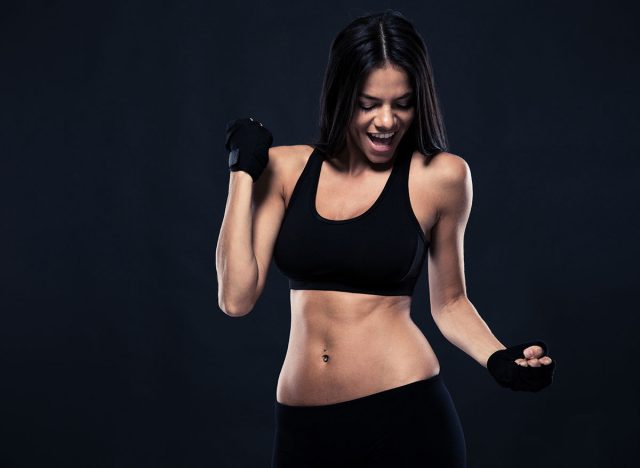
Did you know that adding strength training for endurance athletes will help them get faster in their races and training? Strength training will increase leg strength and improve your body's efficiency in using energy and oxygen. Studies (see below) have shown that athletes who embark on an 8-week strength training program will increase their Running Efficiency (RE). What is RE? Running efficiency is using less energy at a faster speed but with proper running form.
Initial Steps to Take Before Strength Training
First, ensure you understand the exercises and gym equipment. When I work with my clients, I make sure they know basic movements well before I add weight to their program.
Next, if you don't feel comfortable in the gym, I would sign up with a personal trainer, a boutique-style gym, or a CrossFit gym to provide and show that you are doing the exercises correctly.
If you know the exercises and how to use the machine and bars, you can reach out to me directly here to start a training program designed for your triathlon, or you can look online for other personal trainers to help you with a workout designed for your life.
My First Strength Training Exercises for Aspiring Triathletes
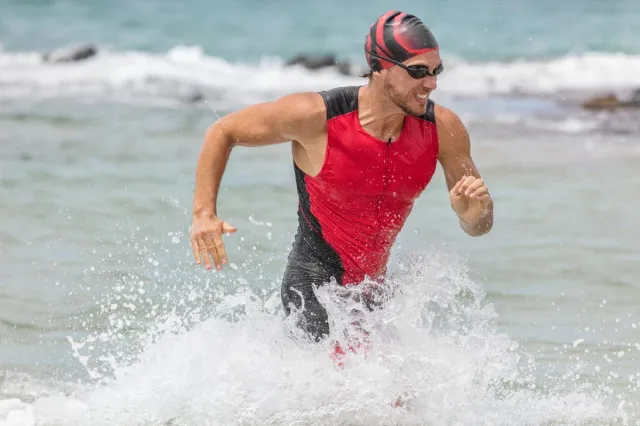
A triathlete should focus on exercises that target the major muscle groups used in the swim, bike, and run. Most of these muscle groups are similar. As a coach, I will include exercises such as squats, deadlifts, leg presses, and lunges for the lower body. For the upper body, I will have them focus on pull-ups, chin-ups, rows, lat pull-downs, or seated rows on the machine. Of course, having a solid core with planks and crunches is a bonus! Let me explain three exercises to help the triathlete build their body into a robust and fast machine.
RELATED: 8 Best 5-Minute Frozen Meals for Weight Loss, According to Nutritionist
Squats
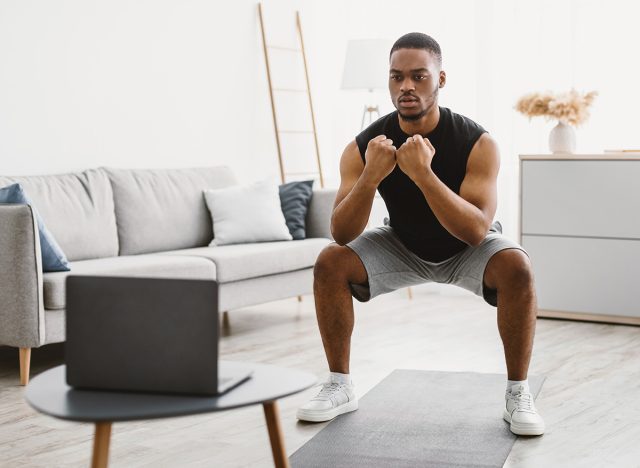
Squats are fantastic for targeting many leg muscles, such as quadriceps, glutes, and hamstrings. There are many options, such as air squats, back squats, dumbbell squats, goblet squats, and so on, so squats are one of my favorite exercises for the lower body.
Five Key Points to a Back Squat
- The shoulders and hips are aligned. The feet are slightly past the hip position, and the toes are turned out. The core is engaged. (Ladies, your hips are not that wide!)
- Only go down as low as you feel comfortable. If you need a box or a bench to tap while doing the squat, that is fine, but no sitting!
- Make sure you are comfortable going into a squat position before you put any load on your back for a back squat.
- If you are uncomfortable going into a back squat, there are other options for squats: Air squats, goblet squats, front squats, and Overhead Squats (Advanced). You have to do what is BEST for you!
- Make sure you get a proper warm-up when performing squats. Activate the glutes, quadriceps, and hamstrings, but remember the shoulders and traps, as the bar is on the back.
Push Ups
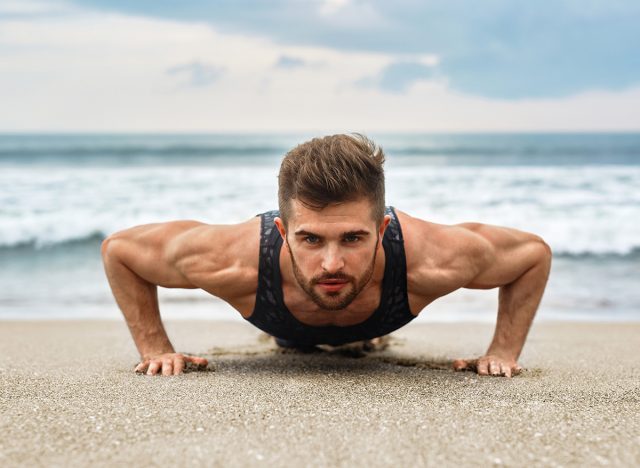
Push-ups can be a challenge for many, but push-ups will also use many of the muscle groups that are great for swimmers and have a more muscular upper body for cycling and running. The muscles used in push-ups are the pectoral muscles, core, bicep, tricep, and shoulders.
Five Key Points to a Push-Up
- Close-handed push-ups involve aligning your hands with your shoulders. Wide-handed push-ups are another option. You have to figure out which works best for you.
- Make sure your scapulas (shoulder blades) are in a neutral position. When you do a push-up, we want them to move toward the center.
- Keep your core, lower back, legs, and glutes engaged and tight at the top and bottom of the movement.
- When lowering your chest to the ground, the scapula will move toward the spine. Ideally, the chest should touch the ground. When you return, we want to see a full extension in the arms.
- That is fine if you need to go to your knees for a push-up. We still want to see "Rules" #3 and #4 when doing the push-ups.
Core Work
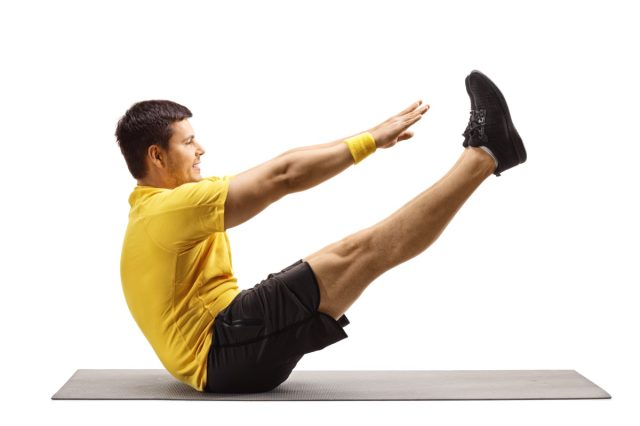
Core work is tricky because sit-ups are only the end-all for some athletes. I have an athlete who can not do sit-ups due to her back, so I have to develop new workouts to help her with her core. The same may apply to you. My favorite exercise for abs is Hollow Rocks, and if you can advance it, then V-Ups are fantastic, but let's discuss Hollow Rocks.
Five Key Points to Hollow Rocks
- Make sure your lower back is genuinely engaging with the floor. It should stay in contact with the ground.
- Lift shoulders off the ground, then lift legs off the ground and keep them bent at a 90-degree angle.
- Start rocking back and forth through the hip to the bottom of the shoulder blades. Think of your joints NOT moving. Look at your feet.
- Once you master the "basic 1, 2, and 3" movements, you can advance. The first advancement is a single-leg extension. Work on holding the movement and then adding the rocking movement.
- Once you get 1 – 4 down, let's add both legs. Practice holding first with both legs and then start rocking.
Common Pitfalls to Avoid
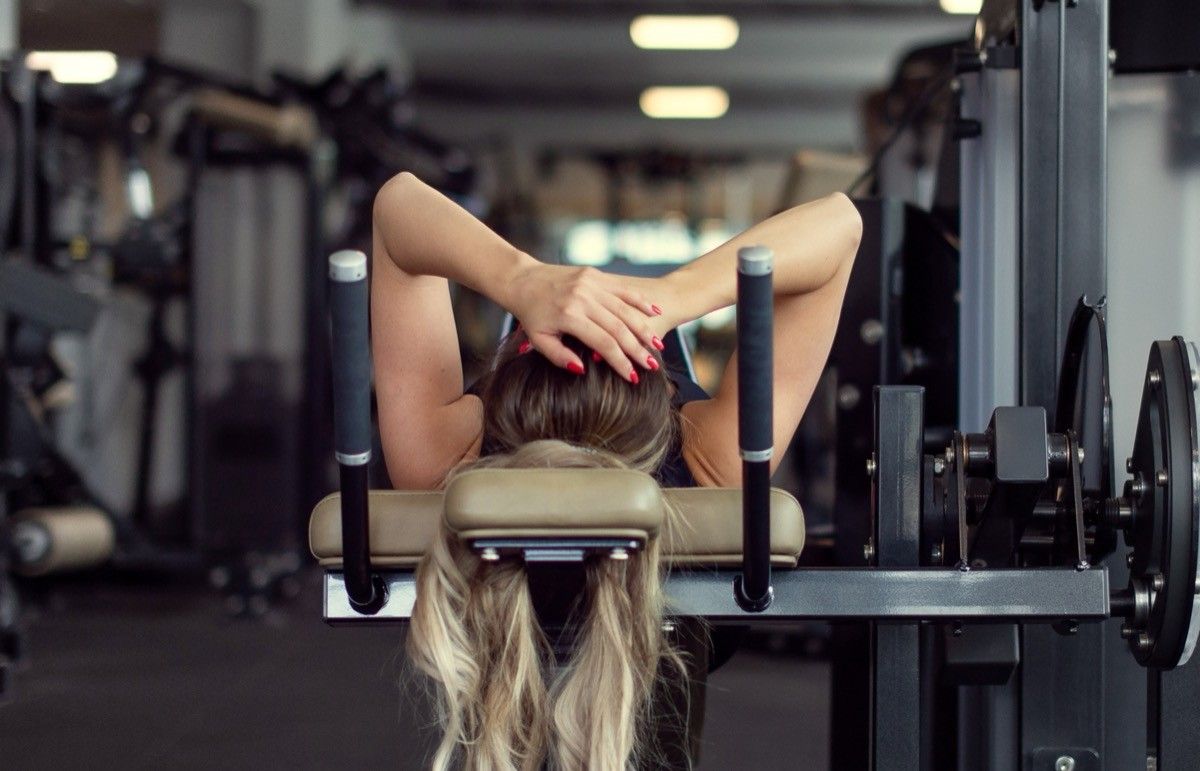
We addressed some mistakes that people should avoid when starting strength training, but here are a couple of mistakes that people should avoid for long-term growth in and out of the gym.
- Increasing your weights too fast: Many people go into the gym and "remember" the time they had a PR squat or deadlift, which may have been in high school and will try to start with that mentality immediately. Slow down, friends! As coaches or trainers, we want to improve your strength gradually. You don't lose your strength overnight and gain it overnight.
- Time To Recover: Rest is vital, whether you have a day off during the week or take time off between upper and lower body days. Make sure you schedule a day off during the week. Contact a coach or personal trainer if you are still determining when to take it off.
- Improper Technique: Proper form can make or break you during strength training. It may look different if you need better form, and try adding weights. Make sure you work with someone who knows how to teach the form or watch videos that can show you how to do the form correctly. If you have a friend who can film you, you can also give yourself feedback or show your coach or personal trainer.
- Overtraining: Many do this, and many fail. When an athlete, runner, or fitness enthusiast doesn't recover after tough sessions, this can lead to injury, sickness, poor performance, and fatigue.
RELATED: 6 Full-Body Workouts to Activate Every Muscle Group
Final Word From the 15x Ironman Triathlete
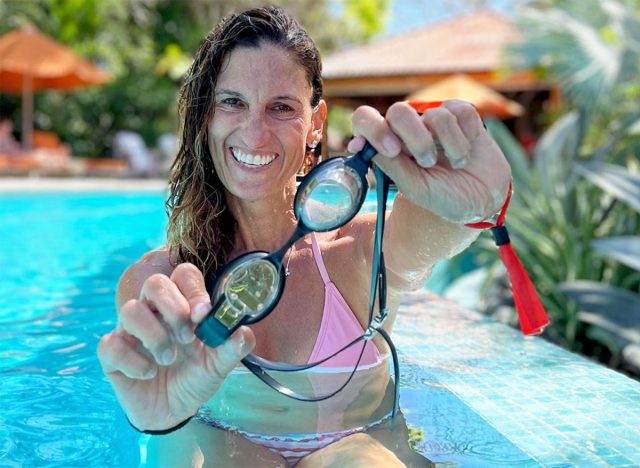
It is a delicate balance when it comes to strength training and getting ready for your triathlon. There will be off-seasons for triathlon training, during which you will incorporate more strength training, and when you are closer to races, you will pull back on your strength training.
As a 15x Ironman Triathlete and a coach for many triathletes, I ALWAYS remind them to have fun. We get to do this. We choose to do this. When I work with athletes getting ready for their first triathlon or Ironman Triathlon, I remind them that this will be their FIRST-ever event, and they will never get that feeling back.
Jen Rulon's transformation from a 15x Ironman triathlete to an everyday healthy human unfolded through a blend of strength training, walks, healthy eating, meditation, surfing, journaling, setting boundaries, and embracing life in Costa Rica, embodying her passion for fitness and authentic living.




